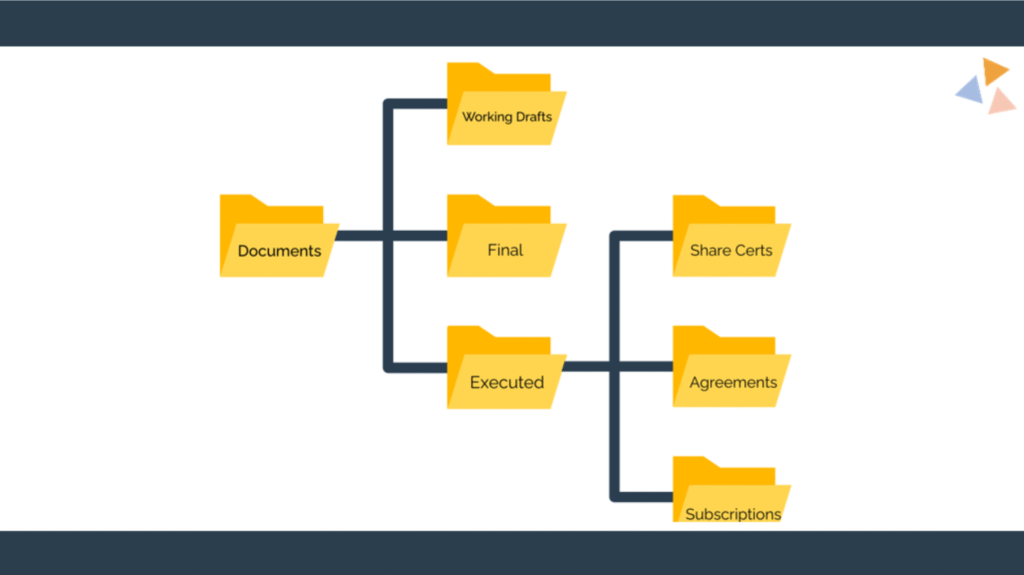There’s a quote I love by Benjamin Franklin:
“FOR EVERY MINUTE SPENT ORGANISING, AN HOUR IS EARNED”
It really sums up the return on your investment when you dedicate time to organisation. Plus, given that Franklin’s achievements included being a Founding Father of the US, the first postmaster general, a writer, scientist, inventor, diplomat, publisher and political philosopher…I figure he probably knew a thing or two about organisation and multi-tasking!
What are the risks of poor law firm organisation?
If Franklin and I haven’t convinced you of the benefits, it’s worth thinking about some of the potential risks and costs of poor organisation:
- Lost revenue from inefficient working practices
- Increased personal and team stress
- Client impact and reputational risk
Being disorganised has an impact – it means things take longer, documents get missed or mislaid, and it doesn’t set a great impression. Time spent organising isn’t wasted – it’s an investment in your business and in this blog, I’m going to walk you through 5 simple steps to boost your law firm’s organisation.
1. Document repeated processes
A lot of work involves repeating tasks regularly and we often carry these around in our heads. If we know how to do them, no problem, right? Well, actually…no. If you’re the only person in your firm who knows how to do things, it means that you can’t easily delegate when you’re busy, and when you’re on leave or absent due to illness, your colleagues can’t progress the work.
Processes need to be clearly mapped so that others can pick them up. Here’s how:
- Identify all the recurring tasks you do regularly. If you’re not sure – keep a task journal or log over a fortnight to note your repeated activities
- List the steps in each task. Break every task down into the individual actions you take. Think of this like making a coffee – you need to get a mug, add coffee, boil a kettle, add milk, etc.
- Clarify roles. Who is responsible for the overall task and/or key steps?
- Document the process. Summarise steps 2 and 3 in a clear, easy-to-follow guide.
Tools to help:
- Post-It’s – great for brainstorming
- Word/Google Docs – for documentation
- Loom – for visual walkthroughs
- Tango / Scribe – for creating step-by-step guides
- Lucidchart / Miro – for collaborative mapping/graphic representations
- ChatGPT / ElevenLabs / N&8 / HeyGenAI – AI assistance to help with defining processes
2. Implement a consistent folder structure
You and your colleagues need to know how to quickly find documents with ease.
I recommend using the following folder structure:

I’ve arrived at this structure over a fair bit of trial and error over the years and find it really works. Filing is one of those areas where it’s easy to lose a lot of time searching for things. Getting organised in this area helps to:
- Increase productivity
- Streamline workflows
- Improve accessibility
- Tighten version control
- Enhance document security
3. Introduce clear naming conventions
Naming and filing go hand-in-hand, and I really recommend tackling the two tasks as close together as possible. They’re both aimed at making your documents easier to locate and retrieve.
I recommend the following structure:
[YYYY-MM-DD] – [Client Name] – [Type of Document] – V1
e.g. 2025-07-04 – Smith & Co – Subscription Agreement – V1_DRAFT 2025-07-06 – Smith & Co – Subscription Agreement – V2_DRAFT 2025-07-15 – Smith & Co – Subscription Agreement_FINAL 2025-07-15 – Smith & Co – Subscription Agreement_EXECUTED
Again, this small change will make a big difference, helping you to:
- Improve searchability
- Reduce duplication
- Make it easier to collaborate and discuss documents as a team
- Save time and work more efficiently
- Be more consistent and scale documentation across clients
4. Invest in your CRM – Customer Relationship Management
Having a strong approach to CRM is critical to law firm success. You need to know your pipeline, key communication points, and ensure all steps are followed on time. However, the reality is that many people’s approach to CRM consists of a busy inbox and lots of handwritten Post-Its.
We use Clio with our clients. It keeps everything (almost!) under one roof and is designed especially for lawyers.
Clio can help you to:
- Onboard Clients and Consultants
- Manage documents consistently
- Track time & billing
- Manage tasks & communications
- Set up time-saving integrations
Once you start using Clio, you’ll be amazed at how you managed before. It’s a really effective CRM tool and the team at Clio is always making improvements and refinements to make it even more user-friendly.
We can help you get set up with Clio Grow and Clio Manage for full law firm organisation. Find out more about our Clio Services.
5. Learn to delegate and work with a Virtual Legal PA or VA
Even if you implement all the other steps in this blog (…well done!), the difficult reality is that most of us simply have too much work to do. At a personal level, this leads to overwhelm and burnout, and it’s also not great for your business either. There’s a lot of admin and paperwork in the legal sector, and the majority of the time, it’s simply not an efficient use of your hourly rate to spend your own time on admin.
You need to delegate, and working with a legal PA or VA is a cost-effective way to outsource tasks that you shouldn’t be doing yourself.
To work out what these tasks are, I use a task square. Over a fortnight, write down all the tasks you do, and then sort them into those you like, don’t like, shouldn’t be doing, and don’t know how to do.

The tasks in the top left box are the ones you should hold on to. All other tasks you should look to delegate as they’re not a good use of your time or energy.
Outsourcing these tasks to a legal VA or PA will help you to free up more of your own time for fee-earning work and reduce your personal stress and workload.
If you need help with this, we’ve got a FREE E-Book.
What next?… Free e-book and a bonus tip!
Implementing these steps isn’t a quick fix. But the time you spend in organisation really will save you time and money in the long run. If you’re ready to get started, I’ve put together a free eBook: 11 ESSENTIAL ACTIONS TO MAKE YOU AND YOUR LAW FIRM MORE ORGANISED
It contains more information on the 5 steps here, plus 6 other great actions you can take to organise your law firm.
I also want to leave you with a bonus tip – this one is really quick and easy and a great bite-sized way to start being more organised. Take just 20 minutes at the end of each day to:
- Clear downloads
- Save documents
- Tidy your inbox
- Plan for the next day
This End of Day Detox will quickly start to make a difference, especially if it becomes part of your regular routine.
Get help with your law firm organisation
If you need a little extra help with organisation, or are looking for long-term admin and business support for your law firm, we can help. Our experienced team of VAs are used to working in law firms – they understand the sector, the terminology, and can collaborate seamlessly with your firm and colleagues.
Book a Call to find out more.
